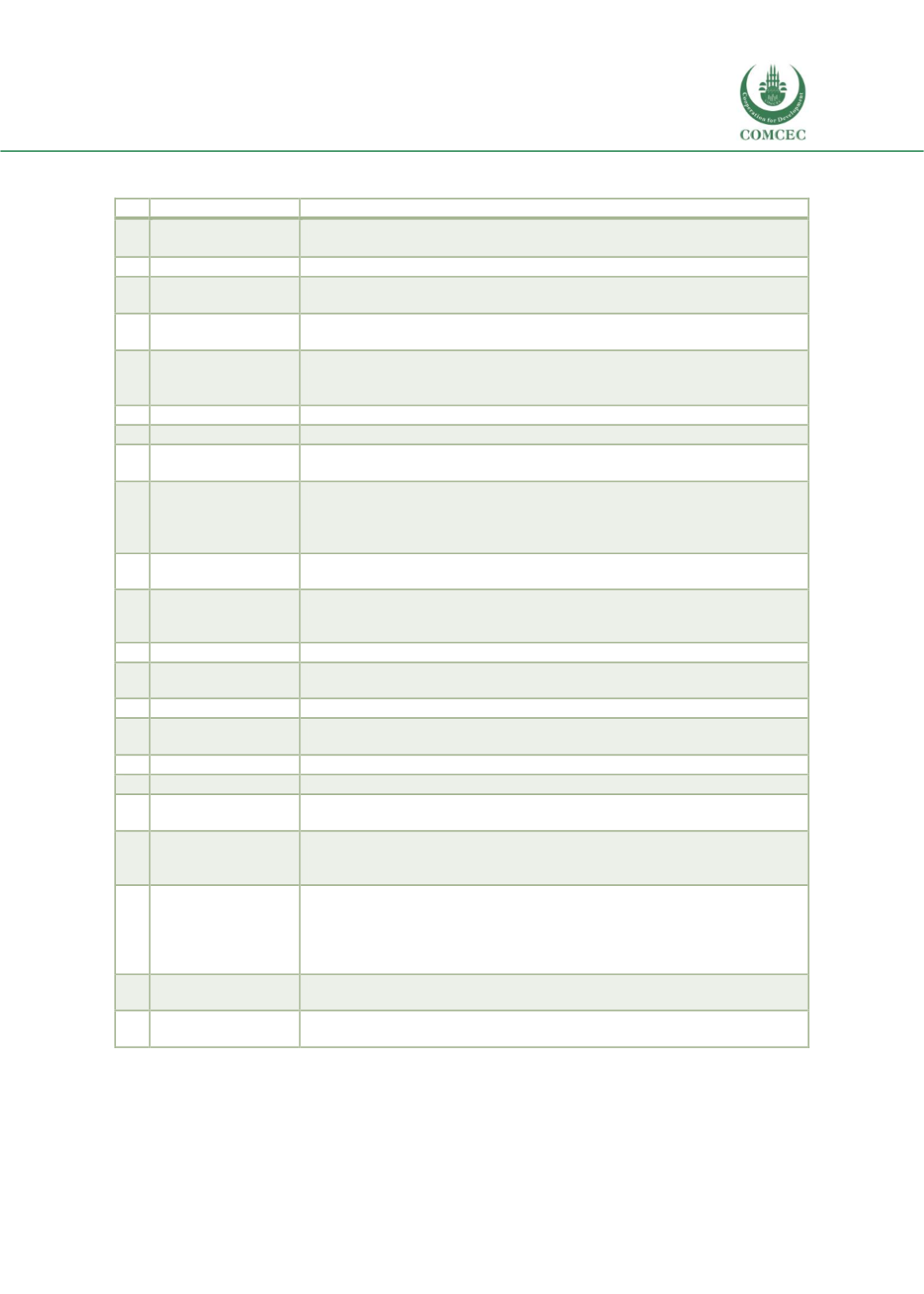

Risk Management in Transport PPP Projects
In the Islamic Countries
191
Table 35: Risks to consider for risk identification, based on PPP guidelines
Risk
Description
1
Land availability
and acquisition
Land needed for the project is unavailable;
There is uncertainty over the cost to acquire the needed land and its timing.
2
Land unsuitability
Unanticipated adverse ground conditions are discovered.
3
Environmental risk
The project causes major environmental impacts on surrounding natural
resources.
4
Health, safety and
permits/licenses
Regulations or standards on health, safety, permitting, licenses, etc. are not
respected.
5
Currency
availability and
transferability
Foreign currency is unavailable to transfer funds from local to hard currency;
Profits earned by the project inside the country cannot be repatriated to its
owners outside the country.
6
Operating costs
Operating costs are higher than expected.
7
Interest rate
Interest rates on the loans used for construction increase.
8
Exchange rate
Local currency depreciates relative to the hard currencies in which the
project’s loans and equity investments are denominated.
9
Market
The quantity of outputs or services demanded by users or the off-taker is less
than expected;
The PPP project’s tariffs or prices are not adjusted according to the escalation
formula agreed upon.
10
Responsibility of
design
The government provided a faulty or inappropriate design.
11
Detailed design,
specifications and
standards
The project’s performance standards or design specifications are
inappropriate for the project’s needs.
12
Design data
Wrong or inaccurate data has been used during construction.
13
Procurement and
construction
Completion of the project construction was delayed.
14
Construction cost
Total construction cost was more than anticipated.
15
Program
Project completion is delayed or there is a cost over-run due to faulty work
scheduling.
16
Operation
The project is unable to function and operate as fully as had been anticipated.
17
Maintenance
The project’s assets are not properly maintained.
18
Ancillary features
Ancillary infrastructure services that the project needs (e.g. approach-roads,
interconnection facilities, etc.) are not provided and completed on time.
19
Transfer
The condition of the assets at the end of the contract term when they are
transferred back to government shows no compliance with the PPP
contract’s maintenance & performance standards.
20
Regulatory risk
Terms and conditions of the PPP contract regarding the operator’s ability to
collect revenues and seek reasonable tariff increase according to the
contract’s price escalation formula are not fulfilled;
New laws or regulations are passed, increasing the costs or reduce the
revenue of the PPP contractor without fair compensation.
21
Political/sovereign
risk
The government nationalizes the project.
22
Force majeure
The project is not able to perform due to natural catastrophes (earthquakes,
flooding, etc.).
Source: PPP unit, Ministry of Finance (2019).
















